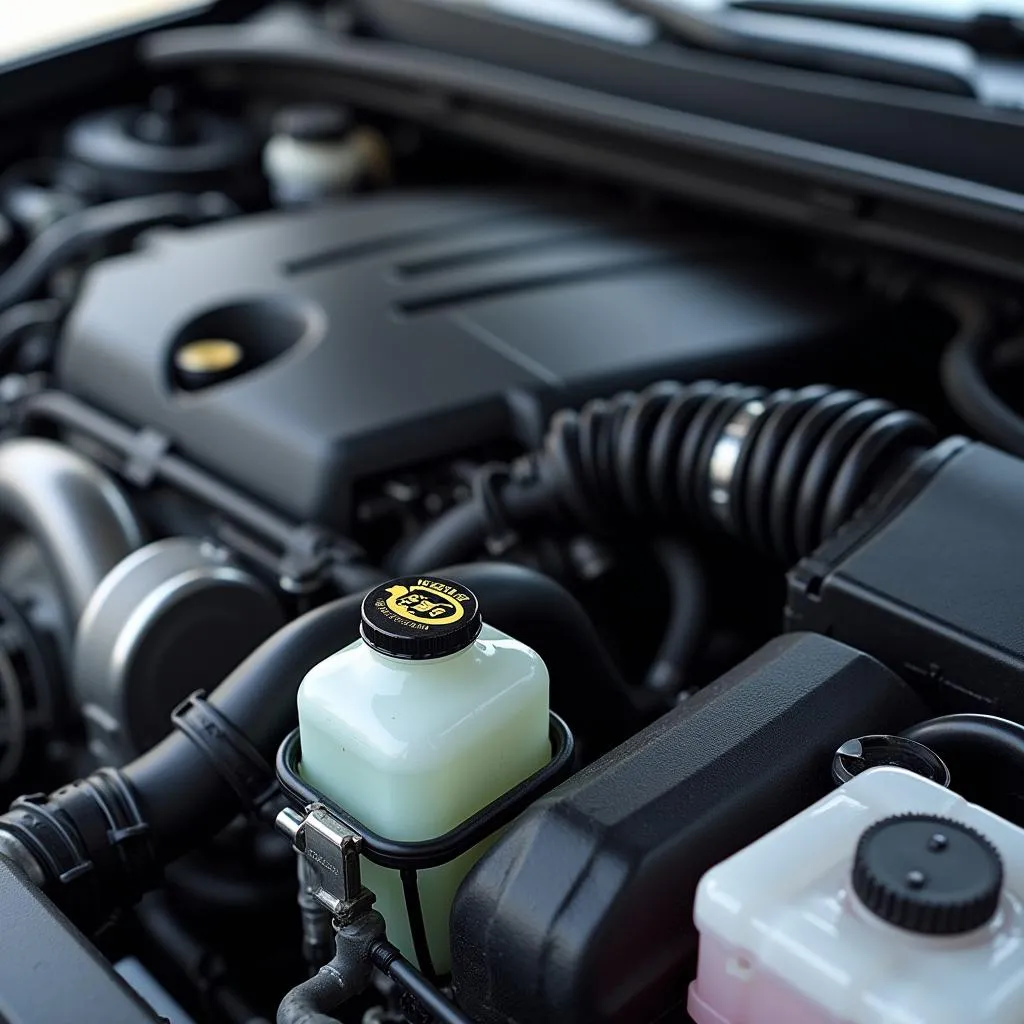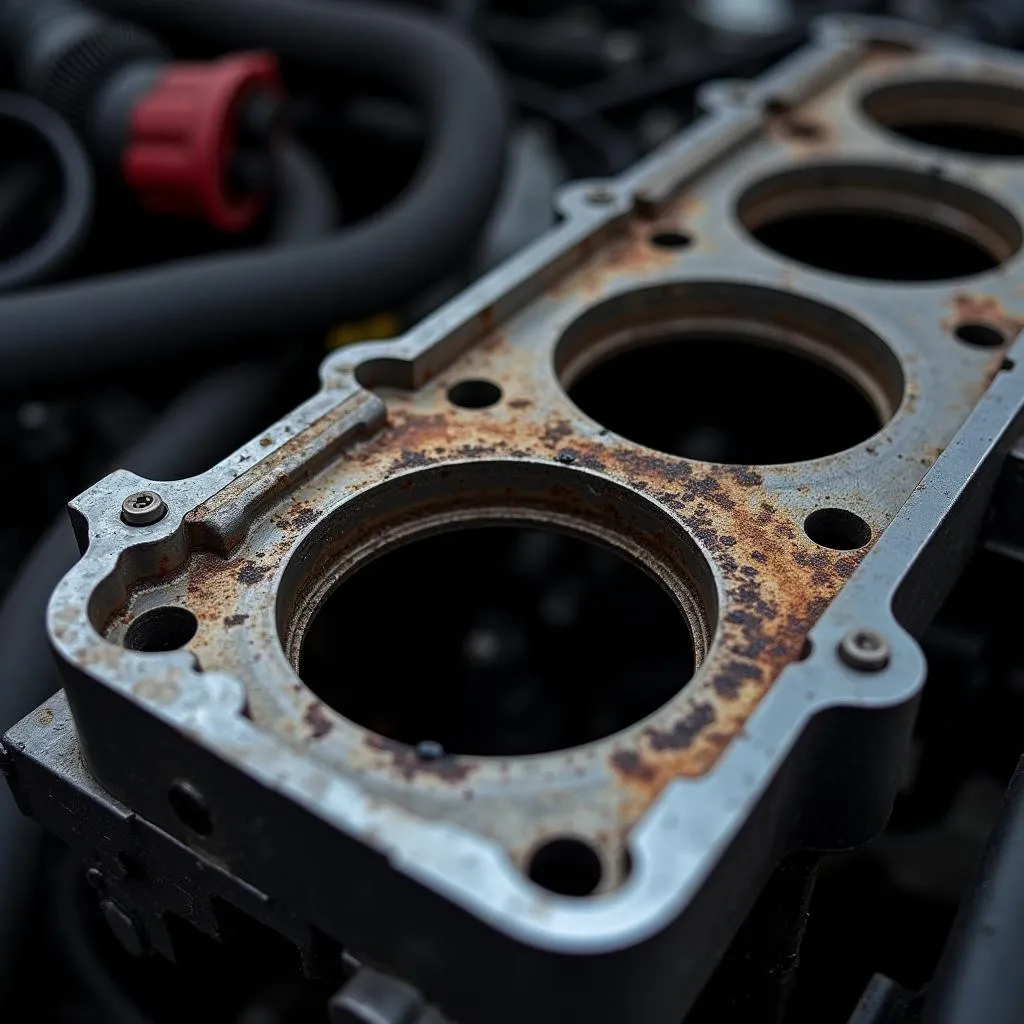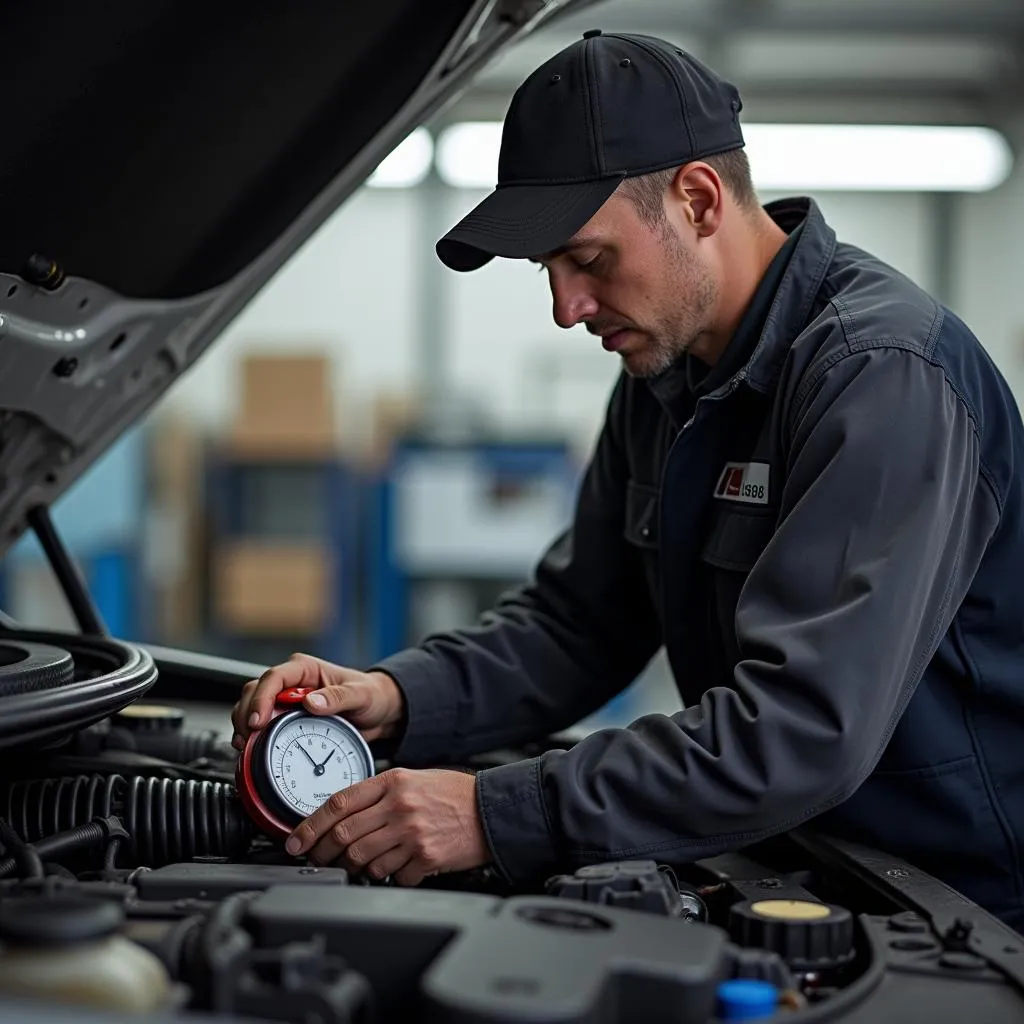When driving, it’s important that all parts of your vehicle function correctly. This includes the cooling system, which ensures your engine doesn’t overheat. A key component of this system is the coolant reservoir, also known as the expansion tank. Sometimes, the coolant reservoir can overflow. In this article, we’ll explore the causes of an overflowing coolant reservoir and show you how to fix the problem.
What is an overflowing coolant reservoir?
The coolant reservoir is a container filled with coolant, a mixture of water and antifreeze. When the engine is running, the coolant heats up and circulates through the engine to cool it down. As the coolant heats up, it expands, and the overflow reservoir captures this excess coolant. When the engine cools down, the coolant contracts and is drawn back into the radiator. An overflowing coolant reservoir occurs when coolant leaks out of the overflow reservoir, even when the engine is cold.
 Coolant leaking from overflow reservoir
Coolant leaking from overflow reservoir
Causes of an overflowing coolant reservoir
There are several reasons why a coolant reservoir might overflow. Here are some of the most common causes:
1. Faulty Radiator Cap
The radiator cap is a pressurized cap that helps maintain the correct pressure in the cooling system. If the radiator cap is faulty, it cannot hold pressure in the system, causing the coolant to overheat and leak out of the overflow reservoir.
2. Damaged Radiator
The radiator is a large heat exchanger at the front of the vehicle that helps cool the coolant. If the radiator is damaged, such as by a rock or accident, coolant can leak out, causing the level in the overflow reservoir to drop and eventually overflow.
3. Faulty Water Pump
The water pump circulates coolant through the engine. If the water pump is faulty, it cannot effectively circulate the coolant, causing it to overheat and leak out of the overflow reservoir.
4. Blown Head Gasket
The head gasket seals the engine block and cylinder head. If the head gasket is blown, exhaust gases can leak into the cooling system, causing it to overheat and the coolant reservoir to overflow.
 Blown head gasket on an engine
Blown head gasket on an engine
How to fix an overflowing coolant reservoir
If your coolant reservoir is overflowing, you should have the problem fixed as soon as possible. Here are some steps you can take:
- Make sure the engine is cold. The cooling system is under pressure, and opening the radiator or overflow reservoir when the engine is hot can cause serious burns.
- Check the coolant level. If the coolant level is low, fill it to the “Max” mark on the overflow reservoir.
- Check the radiator cap. Look for cracks or damage. If the cap looks damaged, replace it.
- Check the radiator. Look for leaks or damage. If you find a leak, you may need to have the radiator repaired or replaced.
- Check the water pump. Look for leaks or unusual noises. If the water pump appears to be faulty, you may need to have it replaced.
- Check the head gasket. If you suspect that the head gasket is blown, you will need to take your vehicle to a mechanic to have it checked and repaired.
When to see a mechanic
If you are not familiar with car repair, you should take your vehicle to a mechanic to have an overflowing coolant reservoir checked out. This is especially true if you suspect that the problem is caused by a blown head gasket.
Common questions about overflowing coolant reservoir:
What happens if I drive with an overflowing coolant reservoir?
Driving with an overflowing coolant reservoir can cause your engine to overheat, which can lead to serious engine damage.
Can I refill the coolant reservoir myself?
Yes, you can refill the coolant reservoir yourself. Just be sure to use the correct type of coolant for your vehicle.
How often should I check my coolant level?
You should check your coolant level at least once a month.
 Mechanic checking coolant level
Mechanic checking coolant level
Conclusion
An overflowing coolant reservoir is a serious problem that should be fixed as soon as possible. By understanding the causes of an overflowing coolant reservoir and knowing how to fix the problem, you can help prevent serious engine damage. If you are not sure how to fix the problem yourself, take your vehicle to a qualified mechanic.
If you have any other questions about vehicle maintenance or repair, please visit our website at autorepairaid.com for more helpful articles and resources. Our auto experts are available 24/7 to assist you with any questions you may have.
